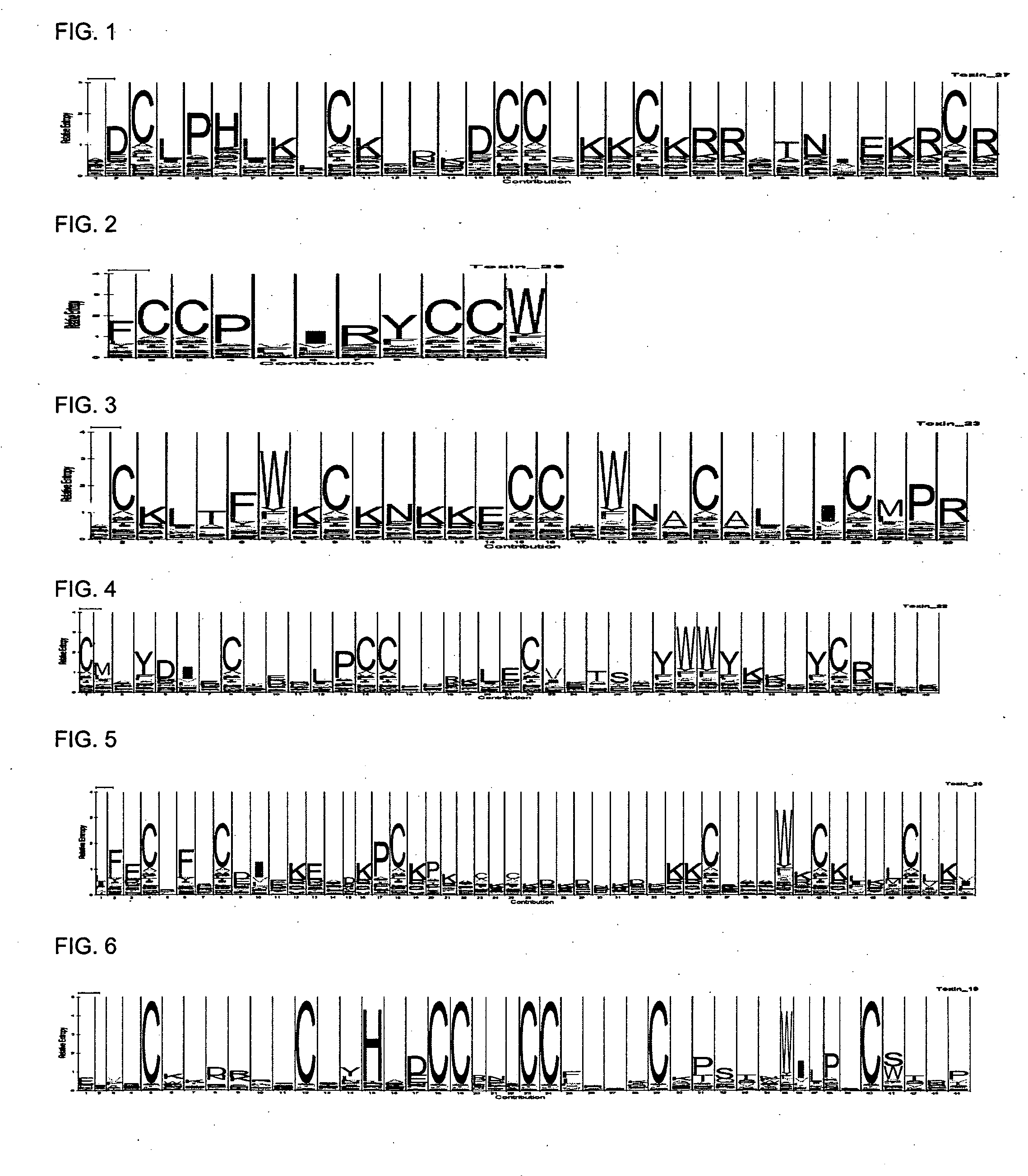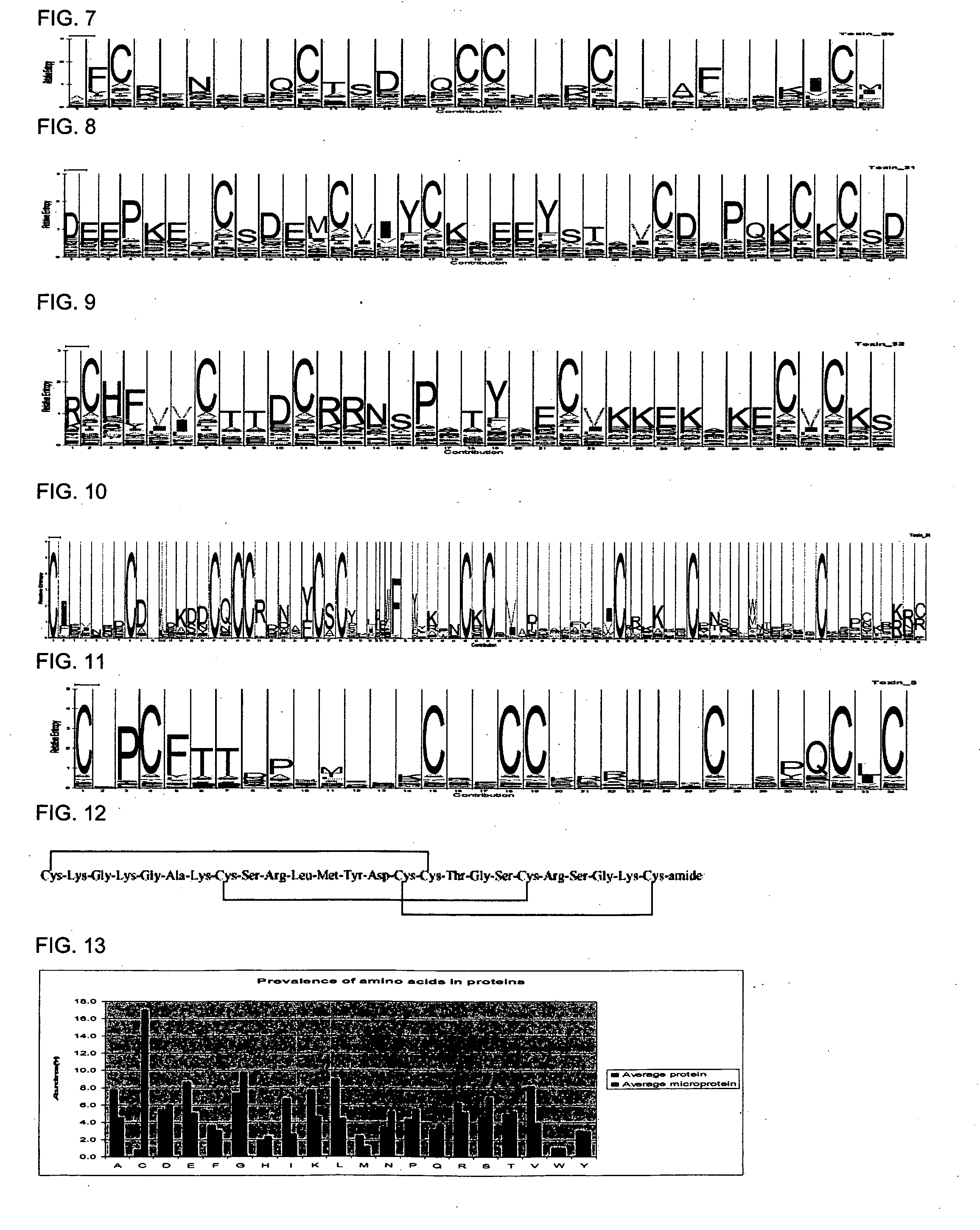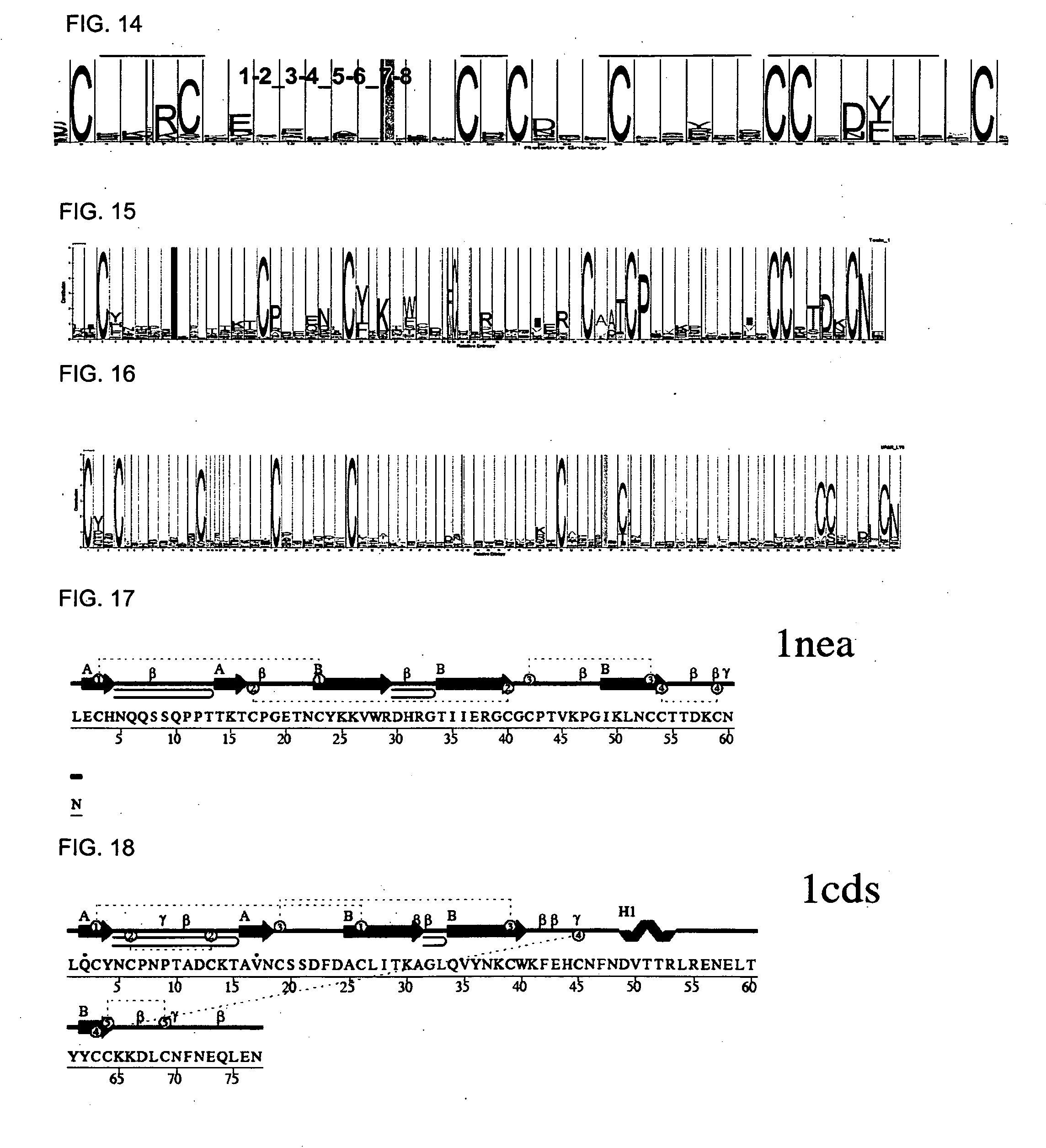Proteinaceous pharmaceuticals and uses thereof
a technology of proteinaceous pharmaceuticals and pharmaceutical components, applied in the field of molecular biology, can solve the problems of affecting the survival of cells, and affecting the survival of cells, and achieves the effects of high target binding affinity and/or avidity, high disulfide density, and convenient rational design and selection
- Summary
- Abstract
- Description
- Claims
- Application Information
AI Technical Summary
Benefits of technology
Problems solved by technology
Method used
Image
Examples
example 1
Randomization of CDP 6—6—12—3—2
[0483] The following example describes the design of a library based on the CDP 6—6—12—3—2. The TrEMBL data base of protein sequences was searched for partial sequences that matched the CDP 6—6—12—3—2. A total of 71 sequences matched the CDP. The amino acid prevalence was calculated for each position as shown in Table 5. For each non-cysteine position, we chose a randomization scheme based on the following criteria: a) avoid the introduction of stop codons, b) avoid the introduction of extra cysteine residues, c) allow a large number of the amino acids that were observed at >3% in the particular position, d) minimize the introduction of amino acids that have not been observed in any of the 71 natural sequences that match the CDP.
TABLE 5Amino acid composition of CDP 6_6_12_3_2 and resulting library design.positionACDEFGHIKLMNPQRST 10100000000000000000 2000640110400004317 30010000000000000000 4450660613173100677 53100010011040000044 640610003401118800...
example 2
Protein Expression and Folding in E. coli
[0484] The oligonucleotides are cloned into an expression plasmid vector which drives expression of the proteins in the cytoplasm of E. coli. The preferred promoter is T7 (Novagen pET vector series; Kan marker) in E. coli strain BL21 DE3. A preferred process for inserting these oligos is the modified Kunkel approach (Scholle, D., Kehoe, J W and Kay, B. K. (2005) Efficient construction of a large collection of phage-displayed combinatorial peptide libraries. Comb. Chem. & HTP Screening 8:545-551). A different approach is a 2-oligo PCR of the (whole or partial) vector followed by digestion of the unique restriction sites in the oligo-derived ends of the fragment, followed by ligation of the compatible, non-palindromic overhangs (efficient intra-fragment ligation). A third approach is assembly of the insert from 2 or 4 oligos by overlap PCR, digestion of the restriction enzyme sites at the ends of the assembled insert, followed by ligation into...
example 3
Design Steps for Antifreeze Protein
[0486] Objective: Design a library for an antifreeze repeat protein
[0487] Strategy: The starting sequence for library design is derived from an antifreeze protein from Tenebrio molitor (Genbank accession number AF160494). This protein is known to express well in Escherichia coli. Both crystal and
[0488] NMR structures are available. The protein is built from repeating units that form a cylindrical shape. The core of the structure lacks hydrophobic amino acids, but contains one disulfide bond per repeat and one invariant serine and alanine residue. The first two turns form a capping motif with three disulfide bonds. It is assumed that this capping motif forms a folding nucleus. Therefore, the first two repeats are typically kept unchanged during in vitro evolution. See FIG. 127.
[0489] In order to choose the cross-over points and to find positions for glutamine residues for Scholle mutagenesis, the structural features of antifreeze protein were an...
PUM
| Property | Measurement | Unit |
|---|---|---|
| Temperature | aaaaa | aaaaa |
| Temperature | aaaaa | aaaaa |
| Temperature | aaaaa | aaaaa |
Abstract
Description
Claims
Application Information
 Login to View More
Login to View More - R&D
- Intellectual Property
- Life Sciences
- Materials
- Tech Scout
- Unparalleled Data Quality
- Higher Quality Content
- 60% Fewer Hallucinations
Browse by: Latest US Patents, China's latest patents, Technical Efficacy Thesaurus, Application Domain, Technology Topic, Popular Technical Reports.
© 2025 PatSnap. All rights reserved.Legal|Privacy policy|Modern Slavery Act Transparency Statement|Sitemap|About US| Contact US: help@patsnap.com



